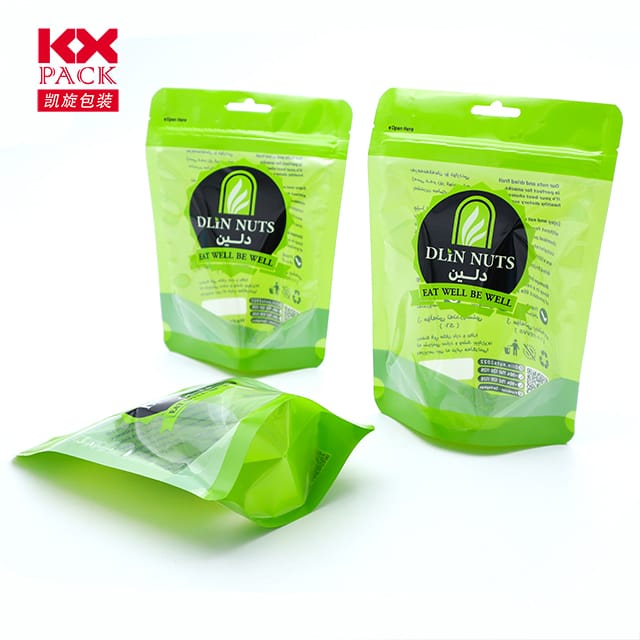Fournisseurs de films d'emballage alimentaire: Naviguer dans le paysage de l'innovation et de la qualité (9)
Film d'emballage alimentaire
In the dynamic world of food packaging, Le choix du fournisseur de films peut faire ou défaire la réputation d'une marque de fraîcheur, sécurité, et durabilité. De l'extension de la durée de conservation à l'amélioration de l'attrait visuel, Les films d'emballage alimentaire ne sont plus seulement des couches de protection - ce sont des outils stratégiques pour la différenciation. Ce blog explore les principaux acteurs, tendances, and innovations shaping the global food packaging film market, helping buyers make informed decisions.
1. The Rise of High-Barrier Films: Préserver la fraîcheur, Reducing Waste
Modern consumers demand convenience without compromising quality, driving demand forhigh-barrier films that block oxygen, humidité, et lumière UV. Fournisseurs commeZhongsu New Materials Technology (Hangzhou) et常州市华健药用包装材料有限公司 (Huajian Package) are leading the charge with multilayer co-extruded films that combine materials like PA (nylon), ÉVOH (ethylene vinyl alcohol), and PE (polyéthylène) for unmatched performance.
- Key Features:
- Oxygen barrier: EVOH layers reduce oxidation, preserving flavors in snacks, café, and meats.
- Moisture resistance: PA/PE composites prevent sogginess in baked goods and cereals.
- Protection UV: Ideal for light-sensitive products like dairy and pharmaceuticals.
Par exemple, Huajian’sHigh Barrier Film Series (AHE) offers a 100–280µm thickness range with EVOH barriers, while Zhongsu’s7-layer blown film lines produce transparent, heat-sealable films for fresh meat packaging.
2. Durabilité: From Recyclable to Biodegradable
With global regulations tightening on single-use plastics, suppliers are innovating with eco-friendly alternatives:
- Recyclable laminates: Qingdao RAJ Packaging combines PET, AL (aluminium), and PE in recyclable structures for coffee pouches and pet food bags.
- Biodegradable films: Some manufacturers are exploring PLA (acide polylactique) and starch-based materials, though cost and performance hurdles remain.
- Thinner films: Fournisseurs comme Jieshou Tianhong New Material optimize material use with 15–60µm PVC twist films for candy packaging, reducing waste without sacrificing strength.
3. Personnalisation: Branding Through Packaging
In a crowded market, packaging is a critical branding tool. Leading suppliers offer:
- Digital printing: Guangdong Danqing Printing uses gravure printing for vibrant, high-resolution graphics on cookie and biscuit films.
- Anti-counterfeiting features: Holographic patterns and QR codes embedded in films (Par exemple, 汕头市凯旋包装有限公司 (KXPACK)) protect against fraud.
- Functional add-ons: Easy-peel layers, fermetures éclair refermables, and spouts for convenience foods (Par exemple, KXPACK’s spout pouches for sauces).
4. Cost-Effective Solutions for SMEs
Not all brands need premium films. Budget-conscious buyers can turn to suppliers offering:
- Medium-barrier films: Huajian’s Middle Barrier Film Series (AAE) uses PA/PE for cost-effective moisture resistance.
- Jumbo rolls: Zhongsu supplies 50–350µm PE films in bulk, cutting costs for large-scale packaging lines.
- Stock designs: Qingdao RAJ offers pre-printed patterns for quick turnaround on dried fruit and snack bags.
5. Global Suppliers to Watch
- China-based leaders:
- KXPACK: Specializes in custom laminated films for coffee, nourriture pour animaux de compagnie, et produits pharmaceutiques, with FDA and BRC certifications.
- Zhongsu New Materials: Focuses on high-performance co-extruded films for fresh and frozen foods.
- Huajian Package: Offers barrier solutions for meat and industrial products, with adjustable thickness for diverse applications.
- International players:
- MULTIVAC Group: Known for flow-pack films for modified atmosphere packaging (CARTE).
- Coverpan S.L. (Spain): Provides biodegradable options for organic food brands.
How to Choose the Right Supplier?
- Certifications: Look for FDA, ISO, and BRC approvals for food safety compliance.
- Material expertise: Ensure the supplier understands your product’s needs (Par exemple, oxygen sensitivity for chips vs. moisture for cookies).
- Customization capabilities: Can they print your brand colors accurately? Add anti-counterfeit features?
- MOQ and lead times: Small brands may prefer suppliers with low minimum order quantities (Par exemple, Qingdao RAJ’s 10,000-bag MOQ).
The Future of Food Packaging Films
À mesure que la technologie progresse, attendre:
- Films intelligents: Sensors that detect spoilage or temperature changes (Par exemple, time-temperature indicators for perishables).
- Edible packaging: Films made from seaweed or starch for “zero-waste” snacks.
- AI-driven design: Suppliers using machine learning to optimize film structures for specific products.
Réflexions finales
The food packaging film market is evolving rapidly, driven by sustainability, personnalisation, et l'innovation. Whether you’re a multinational brand or a local bakery, partnering with the right supplier can enhance product quality, reduce costs, and strengthen your environmental footprint.
Which trend matters most to your brand? Partagez vos réflexions dans les commentaires ci-dessous!
Mots clés: fournisseurs de films d'emballage alimentaire, high-barrier films, emballage durable, custom food packaging, China suppliers







